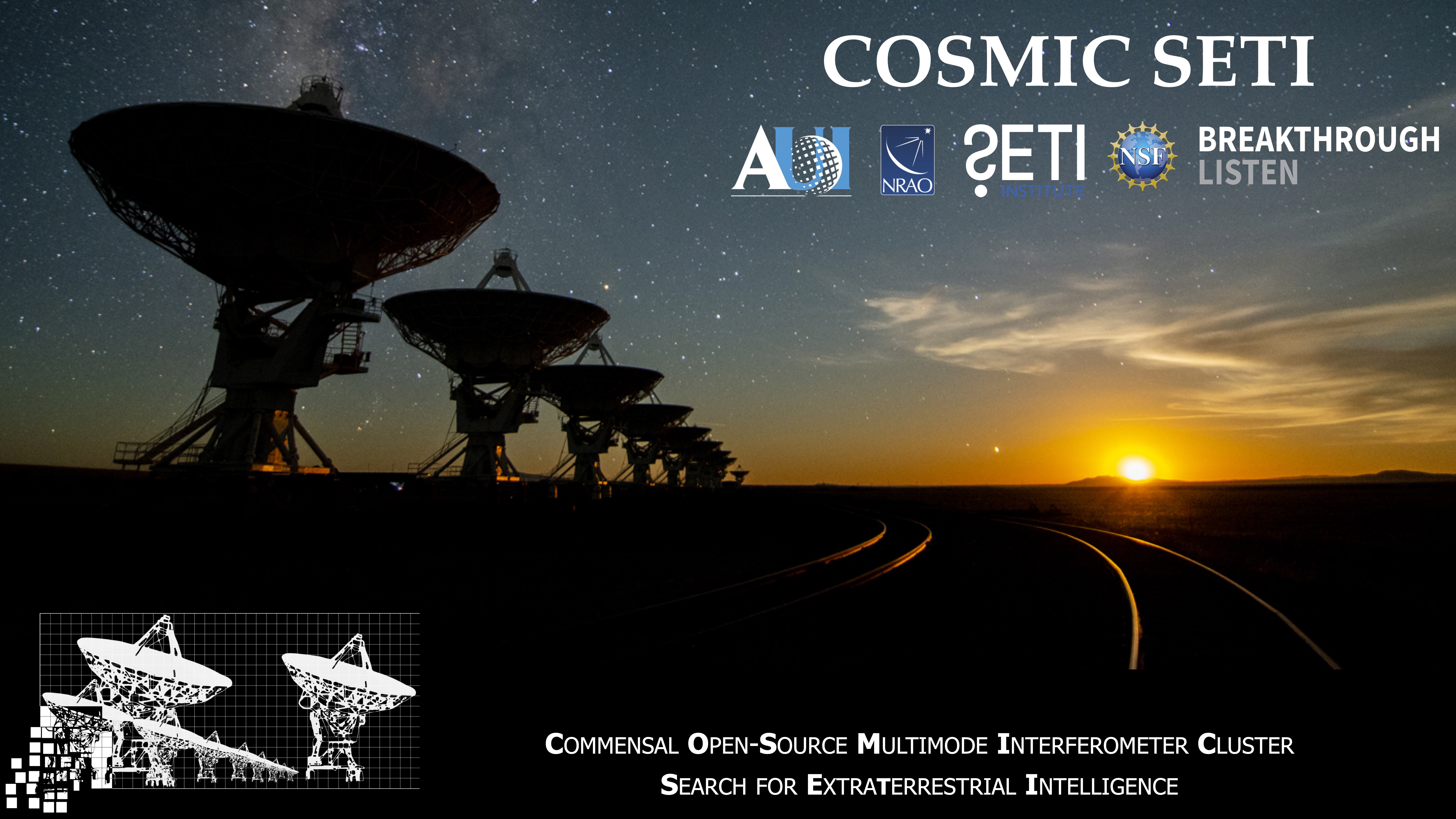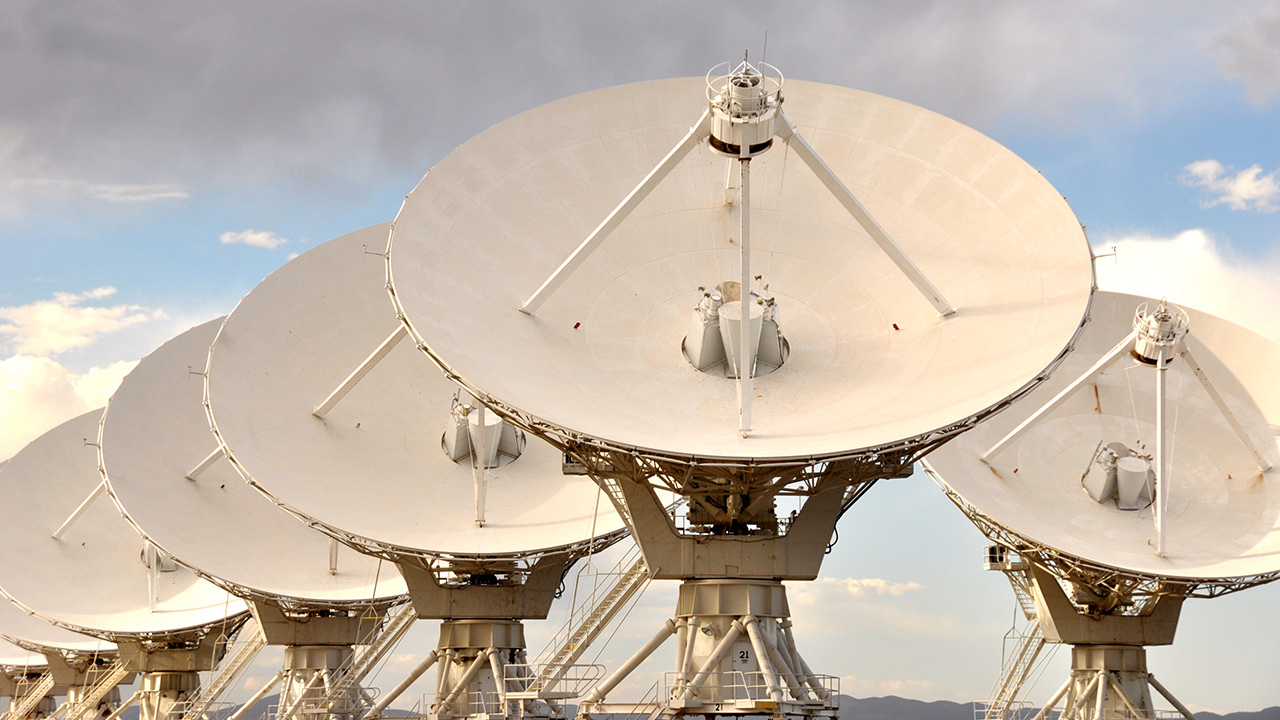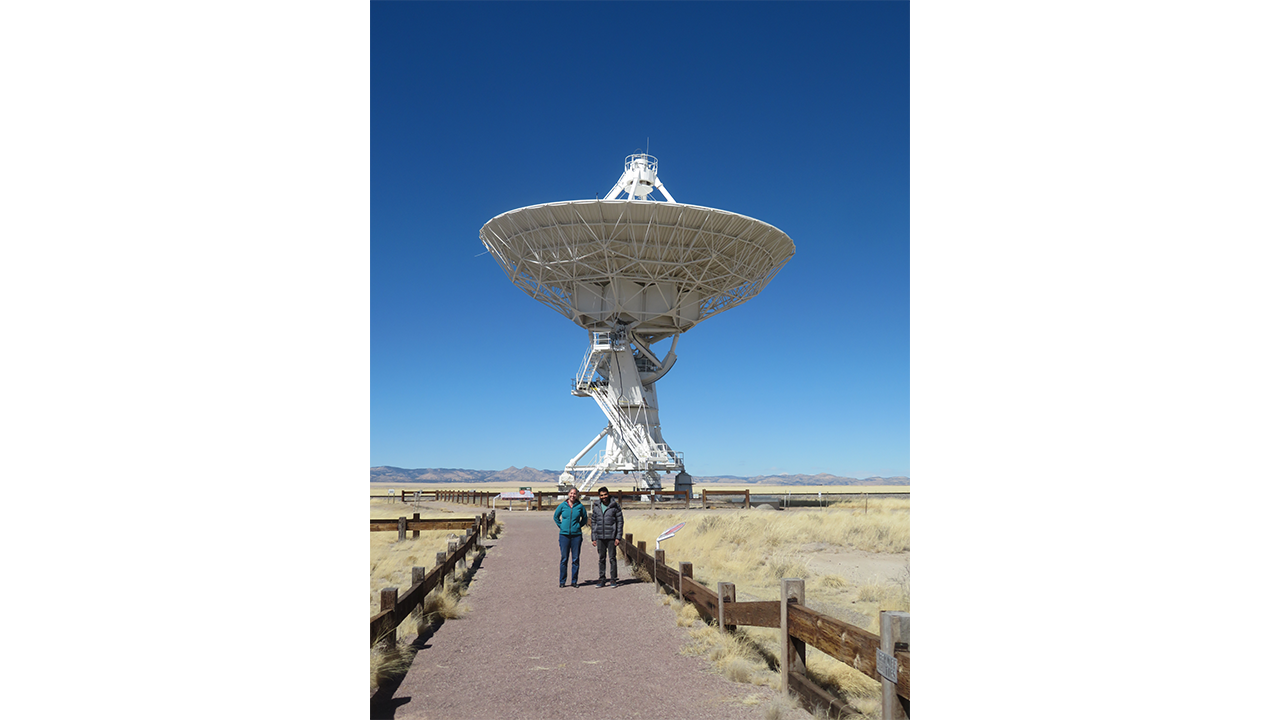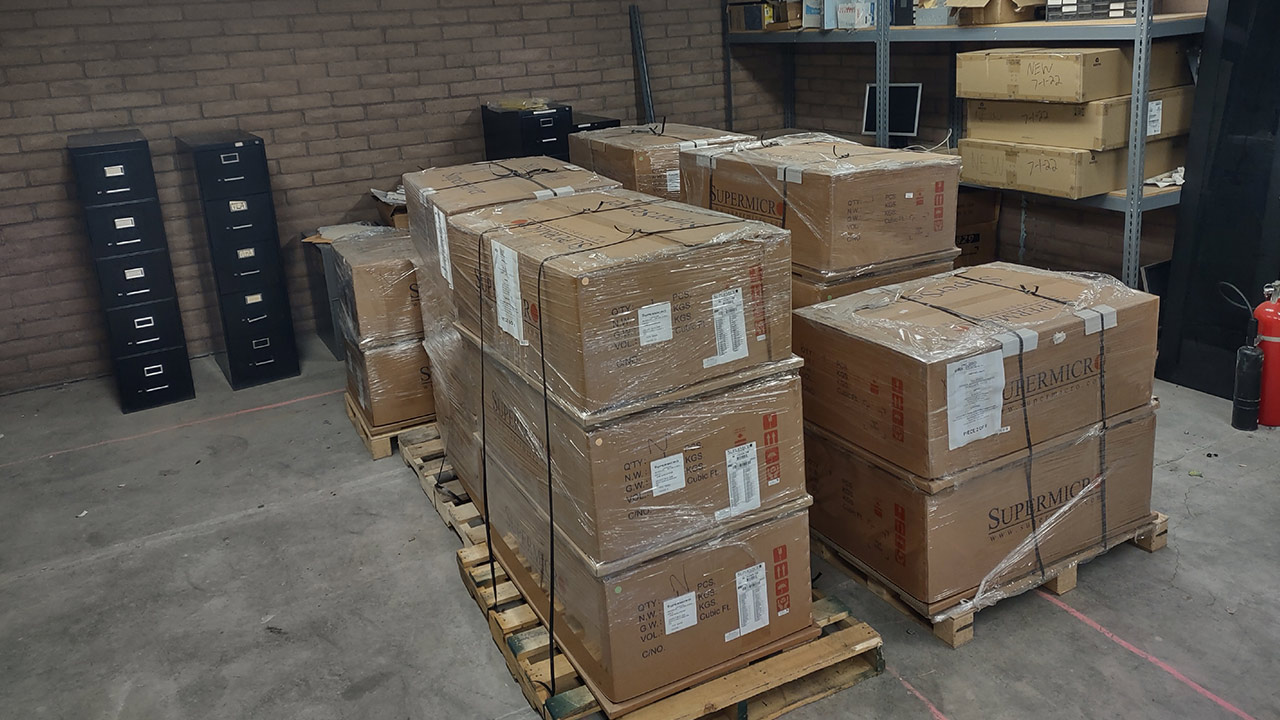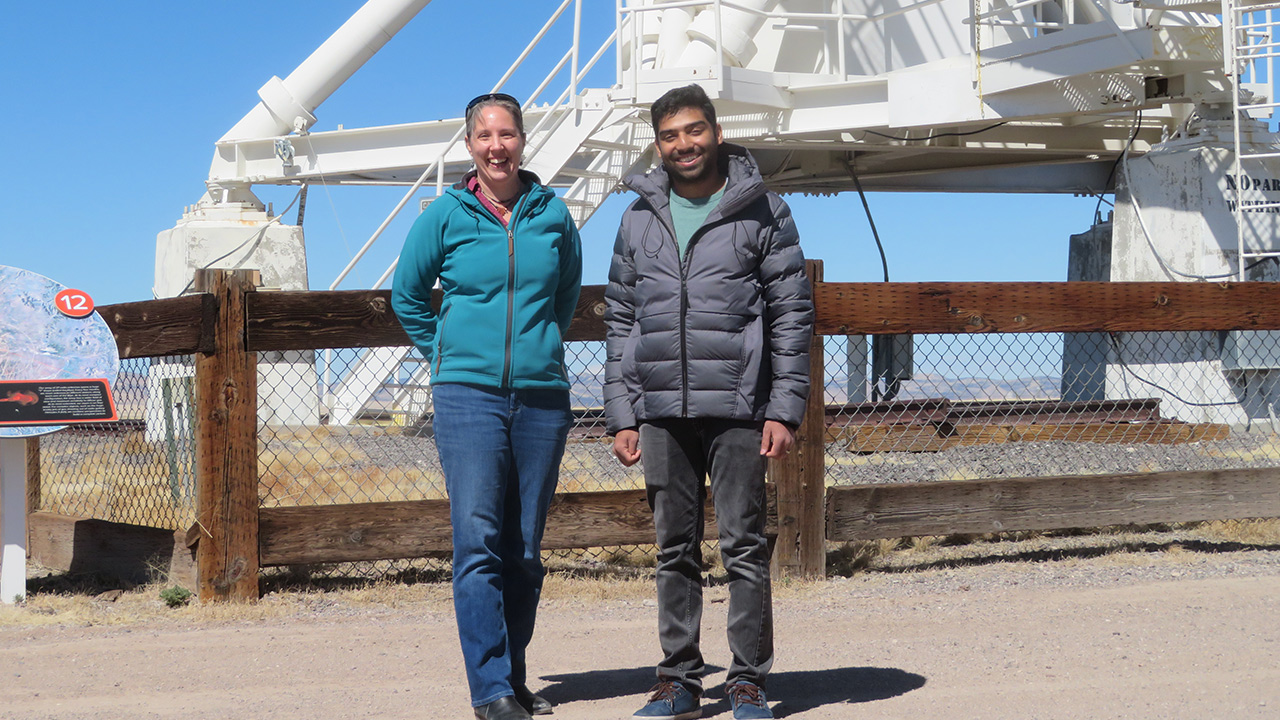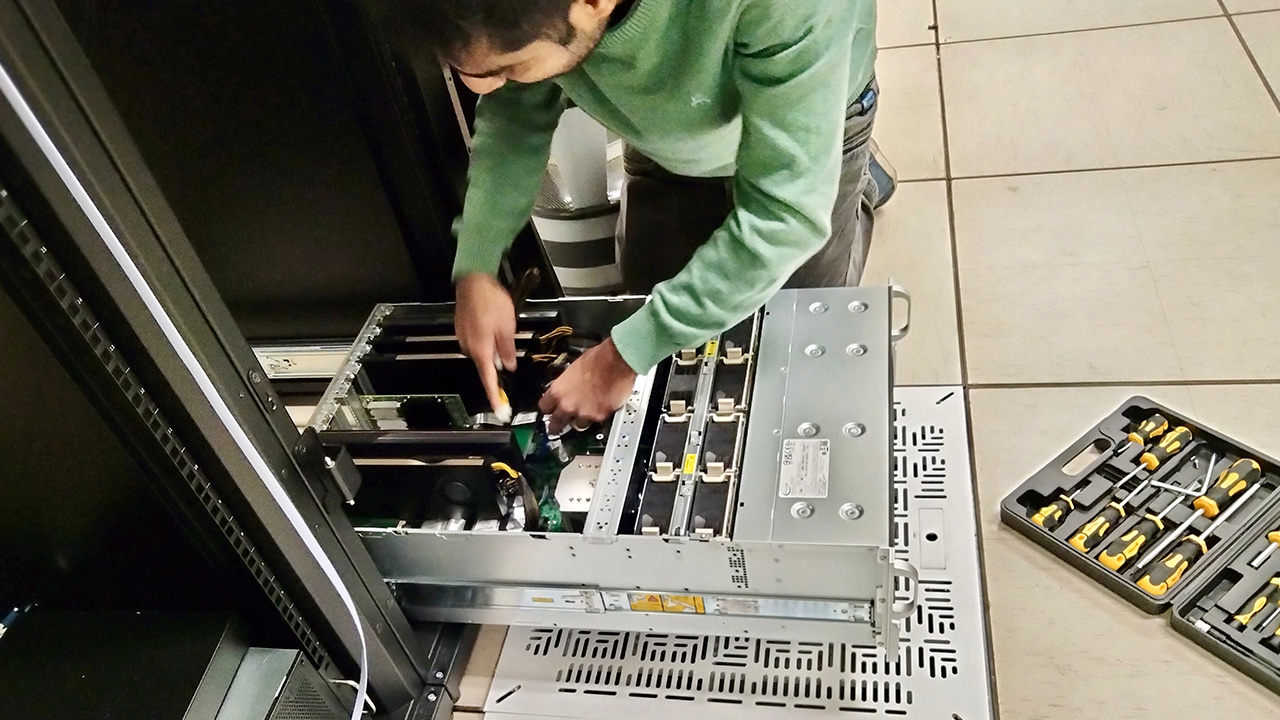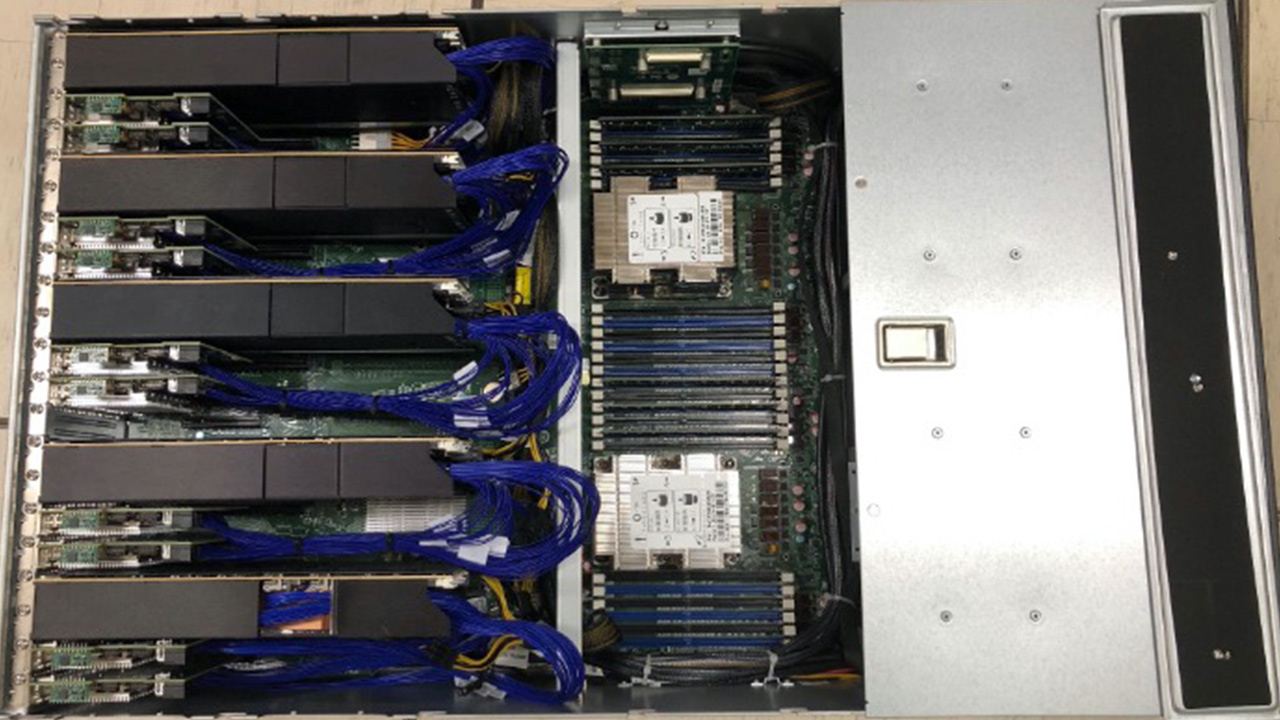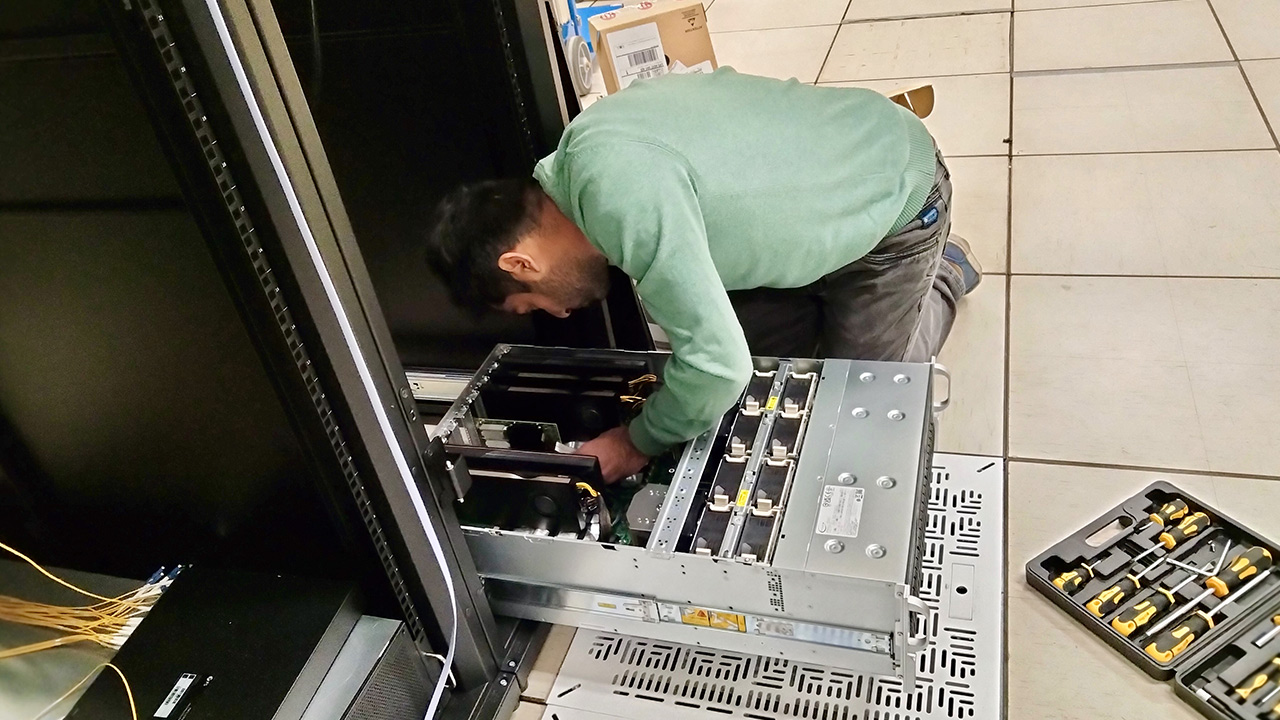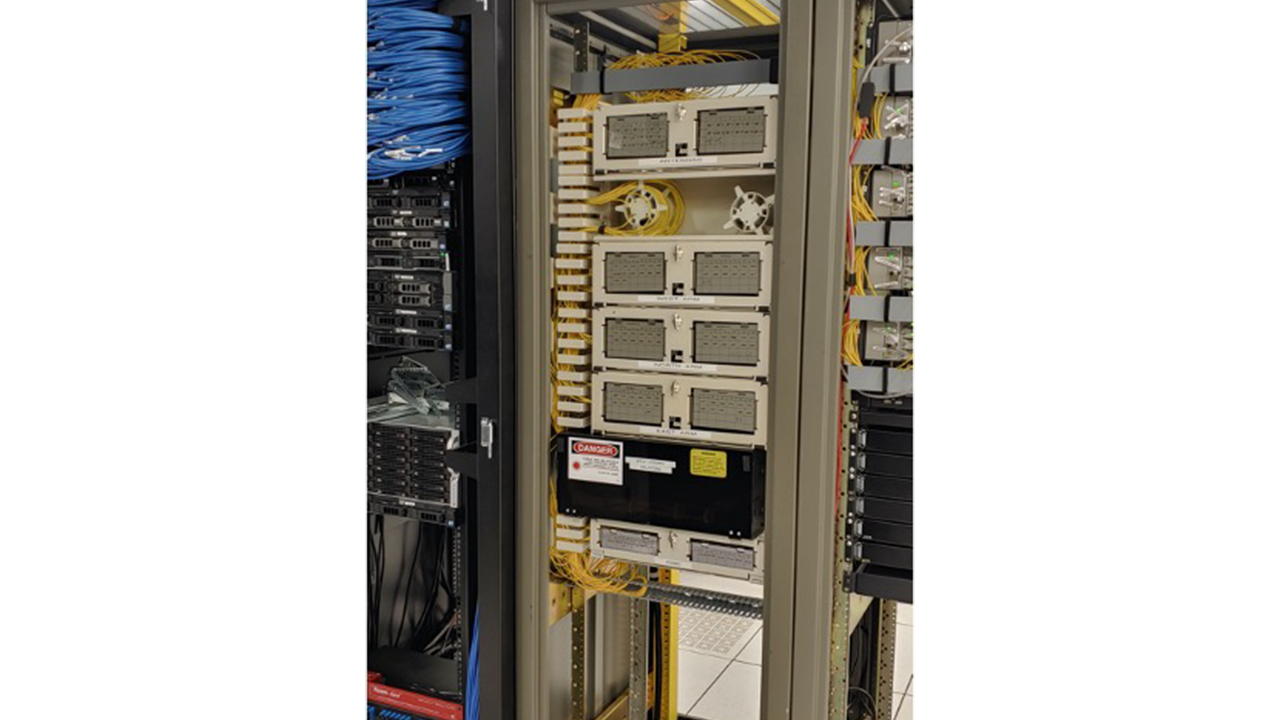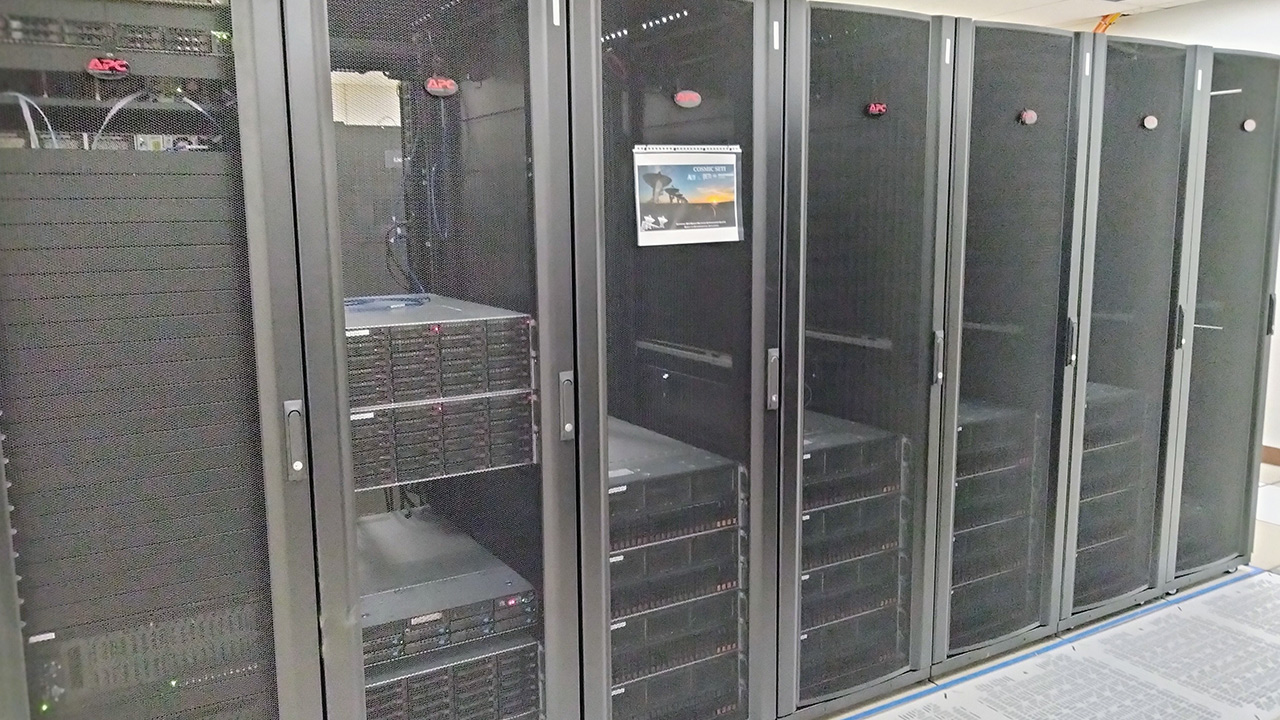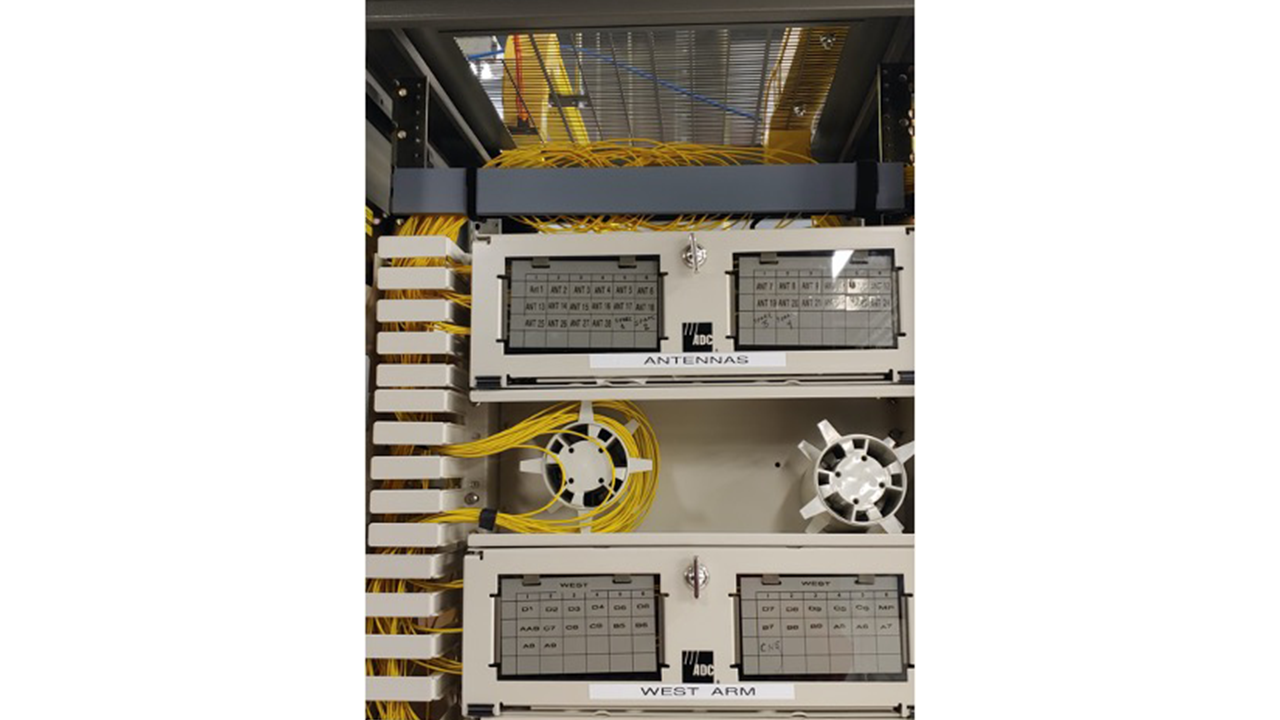What is COSMIC?
The Commensal Open-Source Multimode Interferometer Cluster (COSMIC) is a new commensal Ethernet-based digital signal processing backend and computer cluster on the Karl G. Jansky Very Large Array (VLA) in New Mexico operated through the National Radio Astronomy Observatory (NRAO). Through private funding, we have built a "phase I" design of the system inside of the operational control building at the VLA, which takes an amplified split of the digital signals from each of the 28 operational antennas, splits the signal into different wavebands through demultiplexers and completes first level processing within a series of 14 field programmable gate arrays (FPGAs; one FPGA per set of two antennas) before distributing the 1 MHz coarse channelized data across a series of GPU computer servers.
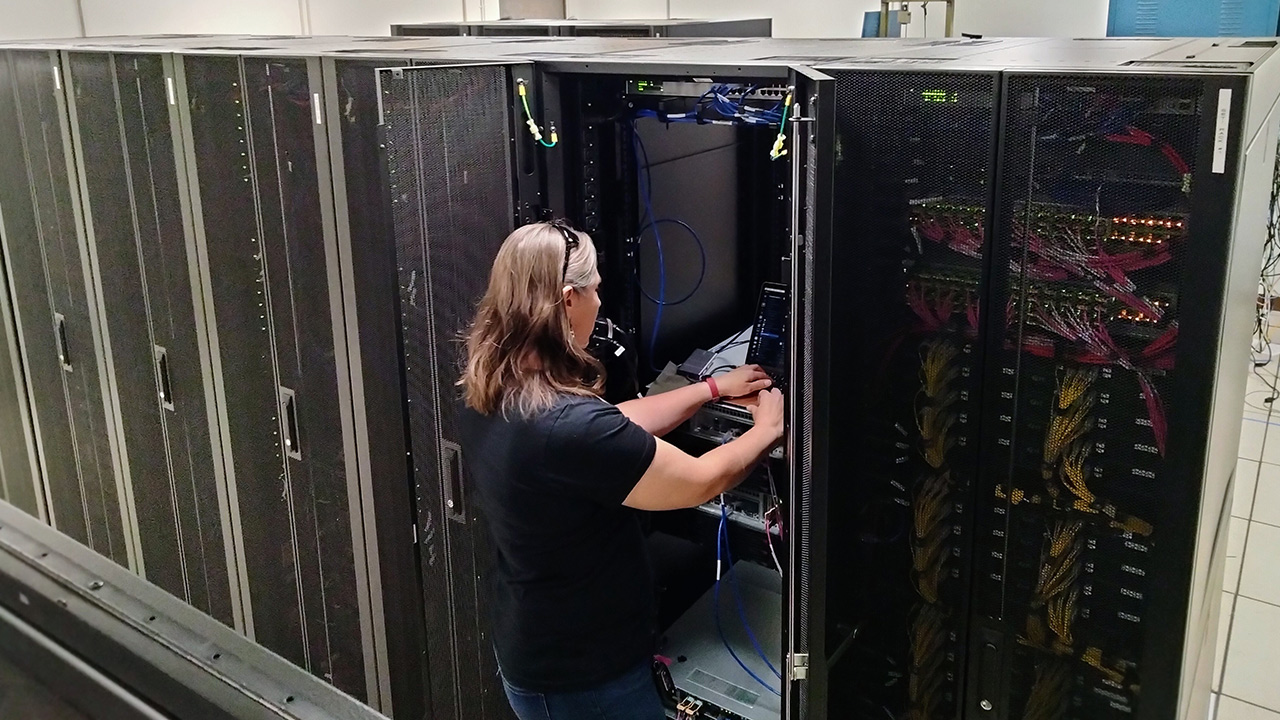
The current COSMIC system is built using commercially available "off-the-shelf" hardware. The software pipelines are pieced together from open-source software, some written by undergraduate and Ph.D. students and industry partners. COSMIC is designed with optimal flexibility and as a commensal system, it is agnostic to the observational setup by the telescope proposer and their key science goals. The software pipeline adjusts autonomously and in real-time to handle correlation, calibration, beamforming, the creation of fine channels to a user-specified value, and a Taylor-tree search for drifting signals in hopes of detecting signs of technology developed outside our solar system.
COSMIC's success so far is due to a dedicated team of international collaborators but with a strong focus on US-based technology and users. Although housed at the VLA National Radio Astronomy Observatory Facilities, COSMIC is operated through the SETI Institute in California in collaboration with the University of California, Berkeley.
While commissioning the COSMIC phase I design, we observed many types of astrophysical sources and phenomena. This includes pulsars, astrophysical methanol masers, satellites, imaging distant radio galaxies, and searching for signals from exoplanets. However, COSMIC has much more it can offer the astronomy community and the observatory.
-
A PDF Draft of the COSMIC paper is available.
- Read here
Here are a couple of videos of a recent scientific conference presentation about COSMIC:
Science abstract:
Searching the stars to look for signs of technologically advanced beings is a computational, technical, and scientific challenge but one that could provide an answer to one of humanity's oldest questions. In the search for radio emissions from complex life, we must navigate a large parameter space (the cosmic haystack) with axes addressing time, location, frequency, and duty cycle. We have created a new digital data recording system on the back of the Karl G. Jansky Very Large Array called COSMIC, which is collecting data alongside standard telescope operations specifically to search for technologically driven radio signals. COSMIC is designed to complete one of the largest searches for extraterrestrial intelligence (SETI) ever attempted and utilizes the skills of a global group of software engineers, system engineers, and scientists to accomplish this goal. In one month alone, we collected data from over 400,000 sources. The results are put through a series of search pipelines designed to filter out terrestrial interference and find signals with an astronomical origin. So far, we have not found anything but we have only scratched the surface of searching for intelligent life outside our solar system.

